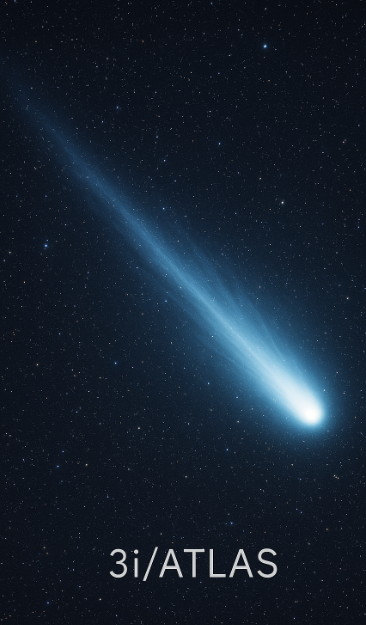3I-ATLAS: The Speeding Ancient Comet Rewriting Our Understanding of the Cosmos
Meet 3I/ATLAS: The fastest, most mysterious interstellar comet transforming cosmic science with unique speed, age, and celestial activity.
In a universe brimming with mystery, comets have often been messengers of the distant unknown. Now, 3I/ATLAS-officially known as C/2025 N1 (ATLAS)-has streaked onto the astronomical stage as the third interstellar visitor ever detected within our solar system, and its rewriting everything we thought we knew about cosmic wanderers.
Blazing Speed and Unmatched TrajectoryWhat sets 3I/ATLAS apart isn't just its alien origin, but the record-breaking velocity with which it penetrates the solar system. Hurtling along at 58km/s as it nears the Sun, this comet has achieved the highest excess velocity ever recorded for an interstellar object. Its path is nearly straight-thanks to an orbital eccentricity above 6-hinting at a journey begun far outside the Suns gravitational clutch and ending with a swift escape back to the stars.
Ancient Origins-Older Than Our SunUnlike typical comets born from our solar systems icy reservoirs, 3I/ATLAS appears to hail from the thick disk of the Milky Way, a region of ancient stars and planetesimals. Estimates say it could be at least 7 billion years old, possibly twice the age of our Sun, giving astronomers a rare glimpse into matter formed long before our planetary neighborhood coalesced.
Early and Vigorous Cometary ActivityUnlike its predecessor 1I/ʻOumuamua, which offered little in the way of visual spectacle, 3I/ATLAS began to shed gas and dust-forming a bright coma-at vast distances from the Sun. Even four astronomical units away (over 600 million kilometers), 3I/ATLAS exhibited vigorous outgassing, implying highly volatile ices are present and potentially offering one of the purest records from beyond our solar system. Its vivid dust tail and outbursts are drawing keen attention as researchers study their composition.
A Cosmic Laboratory for DiscoveryThis is not just another interstellar comet. With innovative survey techniques, including early observations from the ATLAS system and the finest imagery from the Hubble Space Telescope, scientists can access data surpassing anything before. The nucleus appears shrouded, possibly less than a kilometer across, yet the dust plume and solar heating reveal characteristics mirroring-but also differing from-native solar system comets. The James Webb Space Telescope and Mars orbiters are poised to add vital spectroscopic insights, unraveling its gas content and further confirming its exotic origins.
Why 3I/ATLAS MattersThe discovery and continued study of 3I/ATLAS promise answers to fundamental questions: How are planetary systems built elsewhere? What chemical fingerprints do primordial comets carry? By analyzing its rapid transit, spectral content, and evolving coma, astronomers hope to unlock secrets about the formation of galaxies, stars, and planets.
As 3I/ATLAS cuts through our solar system, its not just a fleeting spectacle. Its a traveler from the deeper past, unveiling clues about cosmic chemistry and planetary genesis that no other interstellar object has before. The race is on-watchers across the world scan the skies, knowing that for a brief season, humanity has a chance to study the fast, ancient messenger that links our solar system to the farthest reaches of the Milky Way.
3I-ATLAS: The Speeding Ancient Comet Rewriting Our Understanding of the Cosmos
